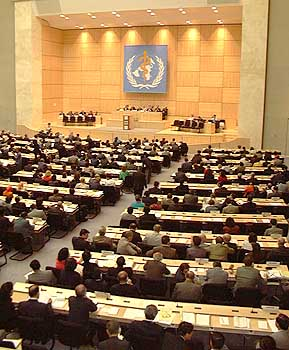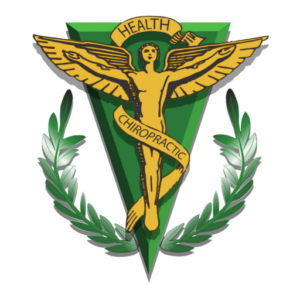By Michel Tetrault, DC
The Chiropractic profession has been developing a gradual and progressive relationship with the World Health Organization (WHO) since before 1985. Initially through Dr. Gary Auerbach and at his invitation, there have been dozens of chiropractors during the past two decades who have attended the WHO’s Annual Assembly, referred to as the World Health Assembly (WHA). An even smaller group has been attending regularly over all this time and these individuals have become known and trusted by the WHO in Geneva, Switzerland.
 The 1988 World Chiropractic Congress in Sydney, Australia resulted in the organization of the World Federation of Chiropractors (WFC). Now, the profession could speak with one voice on behalf of the membership of the National Chiropractic Associations at International gatherings.
The 1988 World Chiropractic Congress in Sydney, Australia resulted in the organization of the World Federation of Chiropractors (WFC). Now, the profession could speak with one voice on behalf of the membership of the National Chiropractic Associations at International gatherings.
There are to date only a few chiropractic non-government organizations (NGOs) that have developed affiliation with the United Nations: WFC, Life International/Life University and the World Chiropractic Alliance. There are also other NGOs that serve the international communities in varying capacities but have not sought or received official sanctions of the UN. These NGOs are primarily involved in organizing humanitarian missions to developing countries or meeting some other needs of the profession as it slowly expands into non-English speaking countries. (Currently, over 95% of the world’s chiropractors practice in primarily English speaking countries.)
What is so significant about the WHO and the WHA? Every member country of the United Nations is also represented at the WHO and sends a delegation from their Ministry of Health to the annual assembly, held every spring. These assemblies bring together the representatives who are responsible for developing their country’s health care policies and programs. These are usually the same individuals who need to be contacted and informed when it is the chiropractic profession’s intention to seek legal recognition, protection and regulation. Attending the WHA is a very cost effective way to meet several Ministers of Health in a “neutral environment” to make introductions and possibly arrange for a more formal meeting back in their office with the chiropractic representatives working in their country.
The chiropractic contingency does more than simply make contacts at the WHA. As representatives of NGOs which participate in forwarding better health care for the world, these individuals are also active in developing alliances with other healthcare NGOs and bring that “unique perspective” only found in chiropractic to the healthcare discussions.
It is wonderful to see that the WHO has taken issue with the ravages caused by tobacco in our societies by establishing a Tobacco Free Initiative currently in the framework developing stages. The intention is to draft a legally binding treaty between countries to curtail the spread of tobacco usage internationally. In the year 2000, there will be 4 million deaths attributable to tobacco usage with the projections placing that number closer to 10 million by the year 2010. Tackling life style choices such as tobacco usage is an area of “common ground” where chiropractic fits in well and can more easily build relationships with other healthcare providers. The more direct contact there is between chiropractors and doctors of other disciplines, the easier it becomes to have productive face-to-face discussions about the unique role chiropractic can play in serving our respective societies.
Fifty years ago, little was known or said about computers. Today, the number of people employed and benefiting from this industry is staggering. Chiropractic has been on this planet as a separate profession for over twice that length of time. Where will chiropractic be as a profession after a second century of existence? In spite of attempts at destroying this valuable service to humanity by organized entities, chiropractic continues to grow.
Take the United States as a measuring stick for the rest of the world. Factoring in a country’s population, economy, employment and humanitarian policies, it has been estimated that the world can currently support over 360,000 chiropractors… today. The latest statistics show a total of 81,000 DCs practicing in the world, meeting only about 23% of the profession’s potential and leaving some 150 million people without access to care they need and can afford.
The profession has finally evolved beyond the survival stages and can now look forward to a century of rapid growth; but this will take leadership and support for that leadership by the entire profession and by the patients who personally benefit from the services. Vision, commitment, coordinating resources, etc. are all qualities essential to good leadership. Willing and able bodies are also needed to take their place in delivering the services to new populations and exposing entire societies to the benefits of chiropractic care: doctors who want to care for people of other cultures; teachers who can speak more than just English to build the faculty for new schools; patient advocates who can organize humanitarian efforts and keep an eye on the profession’s actions.
If you feel compelled to step forward and offer your talents in service at the international level, it is suggested that you become acquainted with the organizations which are already on the front line. The Christian Chiropractors (www.frii.com/~cca) and the Chiropractic Diplomatic Corps (www.chiropracticdiplomatic.com) are just two NGOs who have an international presence and can open some doors for prospective DCs to investigate their interest in foreign practice. Life University (www.life.edu) has several foreign programs requiring faculty and seasoned practitioners. Palmer’s successful Chiropractic Abroad Program (CAP) exposes senior student interns to servicing foreign populations (www.palmer.edu). The WFC (www.wfc.org) lists the contact information for each member association if you are looking to research a particular country as well as formal gatherings where many countries are represented. Dynamic Chiropractic (www.chiroweb.com /international) has articles that give a brief representation of chiropractic in many countries. Today’s Internet technology makes it so easy to gather quite a bit of resources and information by computer and in the privacy of your own home.
Consider this analogy. Ever notice how driving a vehicle in first gear or second gear does not allow much momentum. In fact, NOT changing gear will keep down the speed. When a person only drives on small side roads they can never get into higher gears because of all the curves and corners to negotiate. For most of the past century Chiropractic has been maneuvering the small roads. Chiropractic has now found the on-ramp to the freeway and is approaching that speed and momentum where it needs to be prepared to shift gears and really take-off! Where is this on-ramp? It is in the International arena.
Technology has made the world a lot smaller. Travel has become more affordable making it easier for people to visit foreign lands. Organizations who are paving the way for the future growth of chiropractic need your support. The Chiropractic profession is positioned to assist and support individual DCs who wish to be a part of the pioneering efforts of chiropractic’s second century. If you cannot be a player in the international scene, you can help in other ways such as donating older equipment or visiting DCs when and where ever you travel and encouraging their work. The above organizations can make good use of your gifts.
The momentum is building and pressing for the shift into the next gear. If reading this article has made you feel a little anxious and excited, it is a good indication that your heart is trying to lead you into foreign service or even to pioneer chiropractic in another country. Opportunities to serve are just a “click” away.
